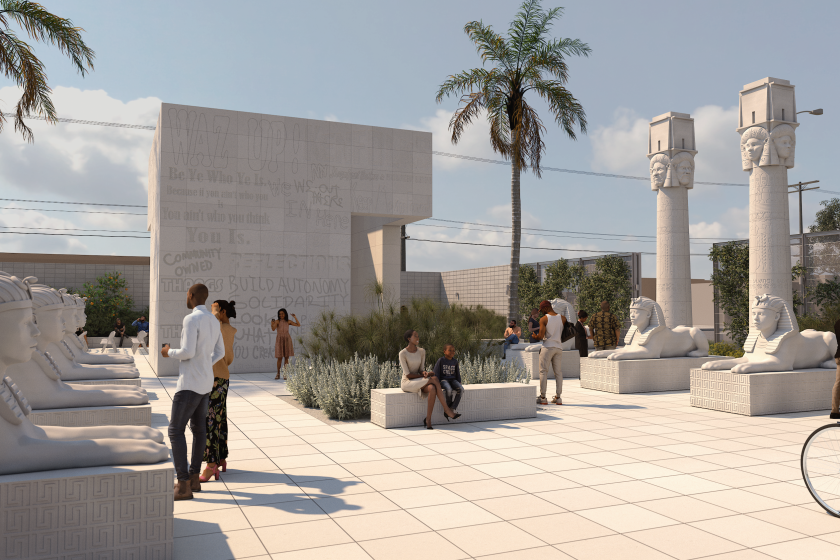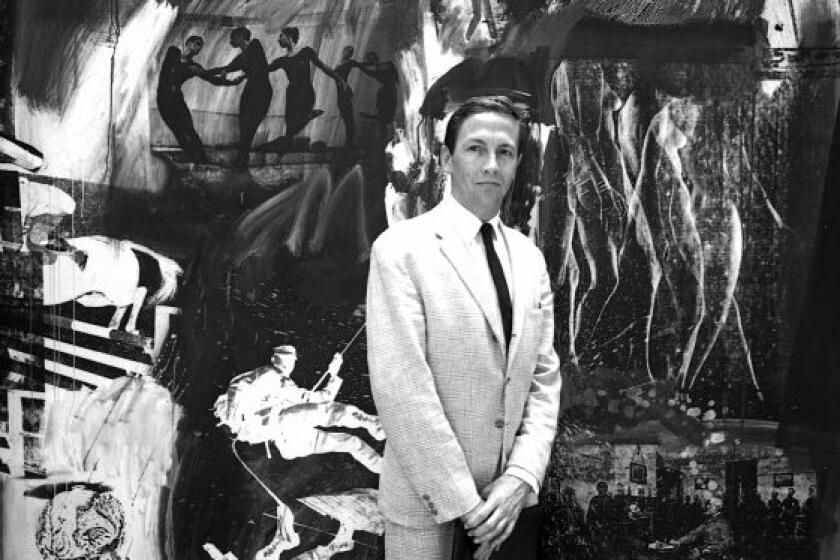An Adventurous Spirit Guides Art Davis Quartet
Bassists are the jazz world’s invisible men, often breaking into the public eye only through associations with high-visibility performers. Art Davis, who led a quartet Sunday afternoon at the Watts Towers Art Center, has a resume filled with distinguished names.
In the late ‘50s and early ‘60s, Davis was a prominent figure on the New York music scene, touring with the bands of Max Roach and Dizzy Gillespie, recording important albums with Art Blakey and John Coltrane (the groundbreaking “Ascension” and “Africa Brass” albums, among others) and doing session work with everyone from Judy Garland to Bob Dylan.
Davis was also an active figure in the struggle to integrate classical and studio orchestras, making appearances with the New York Philharmonic, the National Orchestra and the NBC Symphony Orchestra. A measure of the respect for him among musicians is found on his 1995 recording “A Time Remembered,” which includes saxophonist Ravi Coltrane, son of his late associate, and a rare sideman appearance from pianist Herbie Hancock.
*
While focusing primarily on the Coltrane connection, Davis’ unamplified performance Sunday before a standing-room-only audience inside the Watts Center touched on a number of musical forms, from free-floating impressionistic explorations to hand-clapping boogie-woogie. His quartet, with pianist and Davis contemporary Horace Tapscott, thirtysomething saxophonist Doug Webb and 21-year-old drummer Kharon Harrison, was an exciting, cross-generational ensemble geared to take even the most familiar material into unfamiliar territory.
Much of this adventurous spirit was supplied by keyboardist Tapscott, who tempered a swirling, dissonant attack reminiscent of Cecil Taylor with strong rhythmic touches and moments of soul-stirring blues.
Saxophonist Webb showed a strong Coltrane influence on tenor and Wayne Shorter-styled introspection on soprano. Harrison, a fine emerging drummer, developed appropriate polyrhythms and percussive shading.
Davis has a unique way of varying his bowed improvisations with finger-plucked accents, while his droning, modal accompaniment seemed designed to give his bandmates maximum freedom. The long and frequent ovations given the band, no matter how difficult the music, showed that an audience exists for the kind of challenging and emotionally charged music that Davis champions.
* The Art Davis Quartet appears at the Los Angeles County Museum of Art, 5905 Wilshire Blvd.; July 25, 5:30 p.m. Free. (213) 857-6000.
More to Read
The biggest entertainment stories
Get our big stories about Hollywood, film, television, music, arts, culture and more right in your inbox as soon as they publish.
You may occasionally receive promotional content from the Los Angeles Times.






